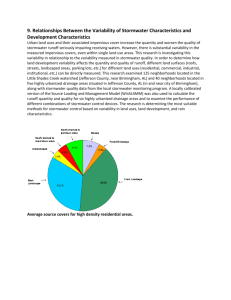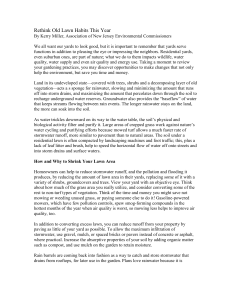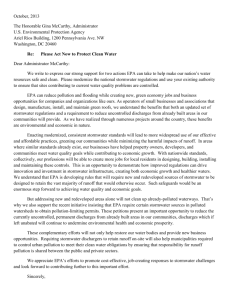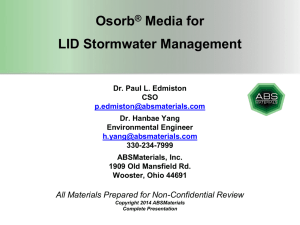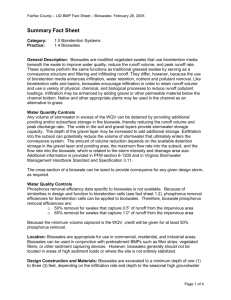MS Bioswale Article Handout v1.1
advertisement
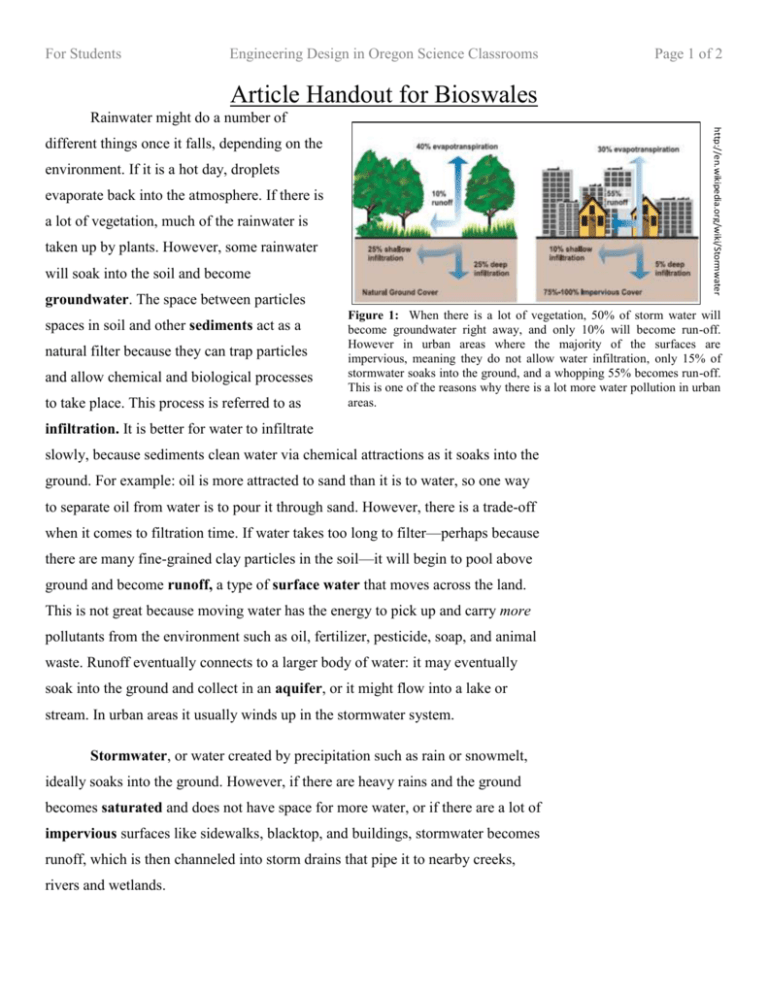
For Students Engineering Design in Oregon Science Classrooms Page 1 of 2 Article Handout for Bioswales Rainwater might do a number of http://en.wikipedia.org/wiki/Stormwater different things once it falls, depending on the environment. If it is a hot day, droplets evaporate back into the atmosphere. If there is a lot of vegetation, much of the rainwater is taken up by plants. However, some rainwater will soak into the soil and become groundwater. The space between particles spaces in soil and other sediments act as a natural filter because they can trap particles and allow chemical and biological processes to take place. This process is referred to as Figure 1: When there is a lot of vegetation, 50% of storm water will become groundwater right away, and only 10% will become run-off. However in urban areas where the majority of the surfaces are impervious, meaning they do not allow water infiltration, only 15% of stormwater soaks into the ground, and a whopping 55% becomes run-off. This is one of the reasons why there is a lot more water pollution in urban areas. infiltration. It is better for water to infiltrate slowly, because sediments clean water via chemical attractions as it soaks into the ground. For example: oil is more attracted to sand than it is to water, so one way to separate oil from water is to pour it through sand. However, there is a trade-off when it comes to filtration time. If water takes too long to filter—perhaps because there are many fine-grained clay particles in the soil—it will begin to pool above ground and become runoff, a type of surface water that moves across the land. This is not great because moving water has the energy to pick up and carry more pollutants from the environment such as oil, fertilizer, pesticide, soap, and animal waste. Runoff eventually connects to a larger body of water: it may eventually soak into the ground and collect in an aquifer, or it might flow into a lake or stream. In urban areas it usually winds up in the stormwater system. Stormwater, or water created by precipitation such as rain or snowmelt, ideally soaks into the ground. However, if there are heavy rains and the ground becomes saturated and does not have space for more water, or if there are a lot of impervious surfaces like sidewalks, blacktop, and buildings, stormwater becomes runoff, which is then channeled into storm drains that pipe it to nearby creeks, rivers and wetlands. For Students Engineering Design in Oregon Science Classrooms for a community is an important job. Environmental engineers must design systems that minimize flooding and http://bit.ly/1bO6yo B Managing the quality and quantity of stormwater Page 2 of 2 pollution. The construction of bioswales is one way to do this. Bioswales are landscape elements designed to catch stormwater runoff so it can soak into the ground at a slower rate instead of flowing across the surface. This helps clean it of pollutants before it enters an aquifer or drain system. Bioswales consist of a shallow ditch with gently sloping sides, and vegetation, as well as various layers and combinations of sediments beneath. These filter materials are arranged to maximize the amount of time water spends in the swale, since slower filtration makes for more effective cleaning. However, infiltration cannot be so slow as to create pooling, because overflow creates runoff which reduces the effectiveness of a bioswale. It is a tricky trade-off to balance, but as an environmental engineer who has just been hired by your city’s Bureau of Environmental Services, it is exactly what you need to accomplish. Your job is to figure out the right quantity and combination of filter materials for a bioswale that minimizes runoff and cleans surface water. Are you up for the challenge? Figure 2: Bioswales intercept run-off from impervious surfaces like streets and parking lots and filter out pollutants using native vegetation and natural sediments like soil, sand, and gravel.





